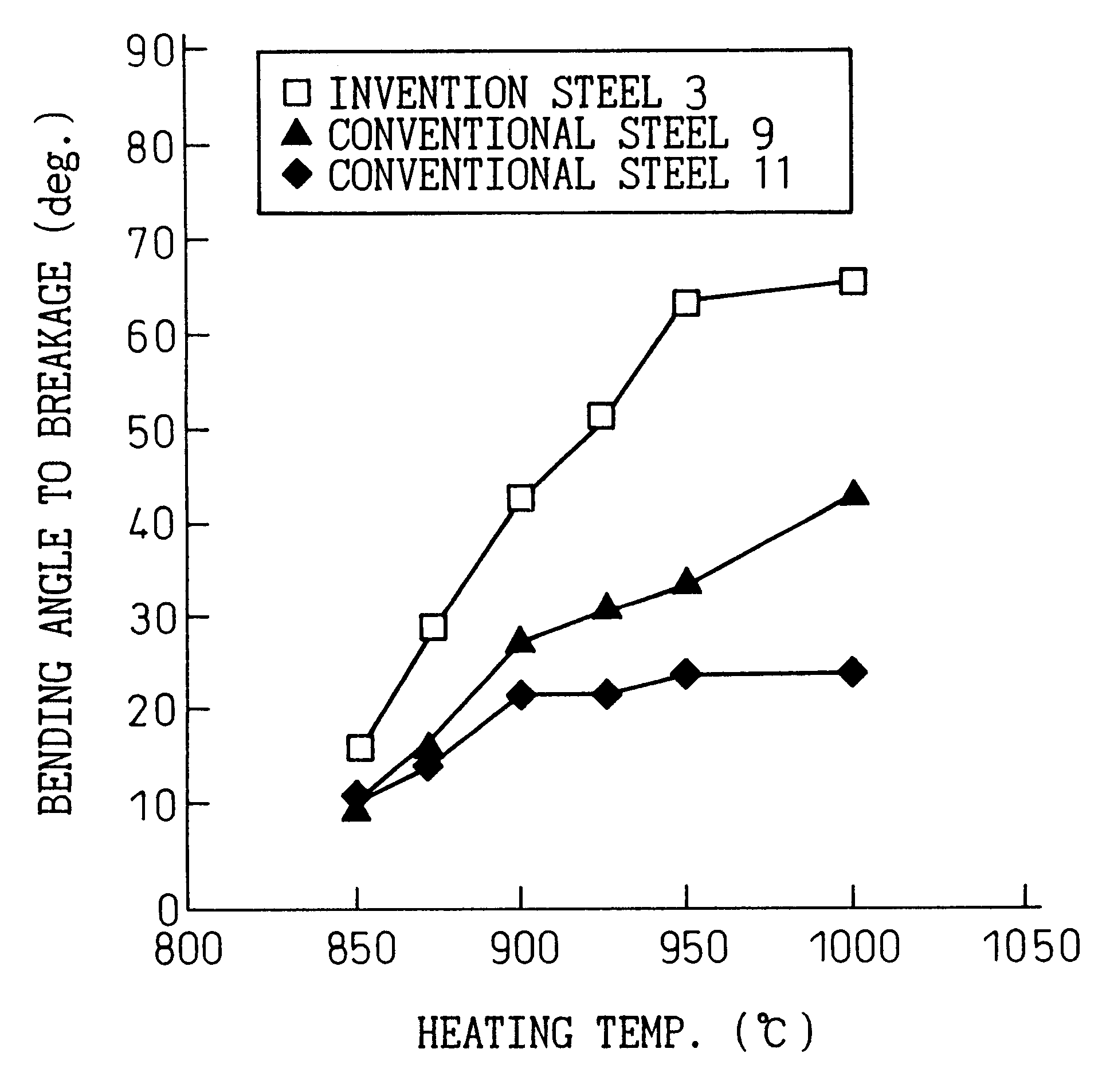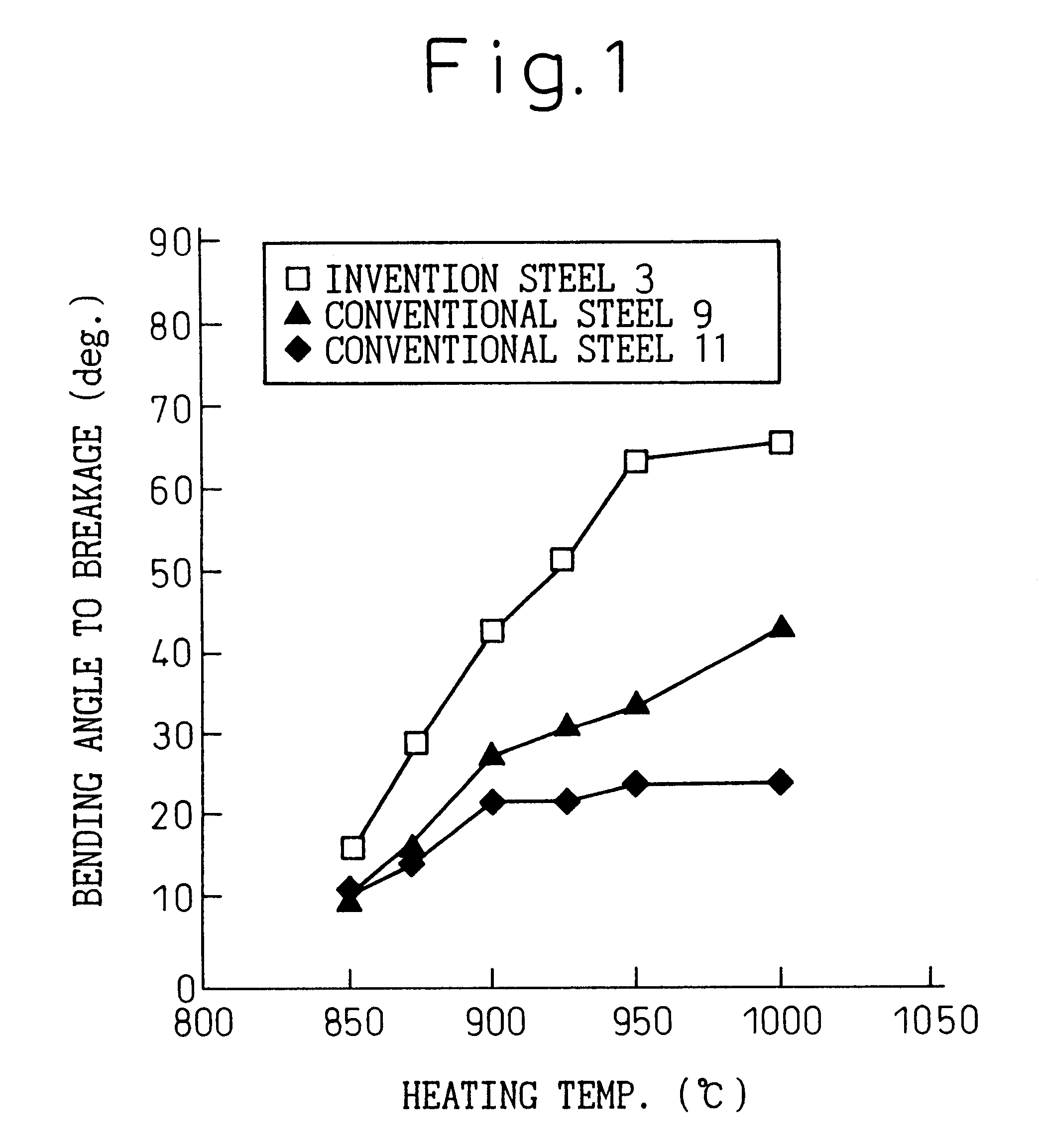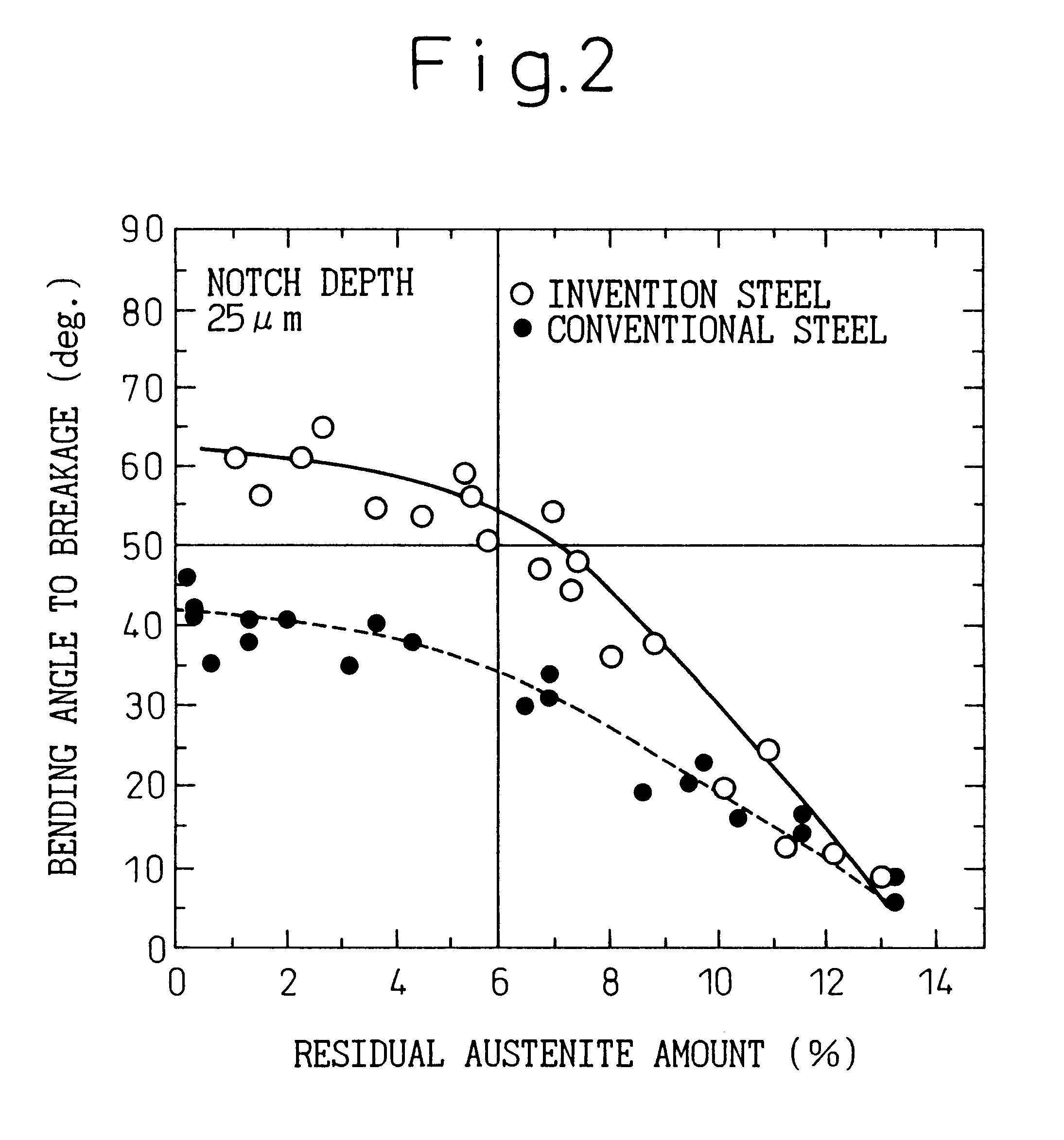Steel wire for high-strength springs and method of producing the same
a high-strength, spring technology, applied in the field of spring steel, can solve the problems of high frequency, disadvantage in productivity and operability, and inability to observe fracture types not observed in conventionally used low-strength steels, and achieve the effect of not certain of the amount of residual austeni
- Summary
- Abstract
- Description
- Claims
- Application Information
AI Technical Summary
Benefits of technology
Problems solved by technology
Method used
Image
Examples
examples 27 and 28
had inclusion sizes larger than the upper limit specified by the present invention and were poor in fatigue property. Examples 29-31 and 33 fell outside the yield ratio or residual austenite ranges. Examples 29 and 30 were poor in fatigue property and permanent fatigue property and Examples 31 and 33 were poor in spring fabricability. Examples 25 and 26, whose P and S contents exceeded the invention limits, were poor in fatigue property. Examples 23, 24, 29, 30 and 31 were inferior to the invention examples in both fatigue property and permanent fatigue resistance. Example 32 had a chemical composition within the invention range but was insufficient in strength and poor in fatigue strength.
The present invention can, independently of chemical composition, achieve both excellent workability and spring performance by effecting heat treatment for controlling the yield ratio and the amount of residual stress to those indicated in the invention examples. However, unless the steel used has...
PUM
| Property | Measurement | Unit |
|---|---|---|
| Fraction | aaaaa | aaaaa |
| Percent by mass | aaaaa | aaaaa |
| Pressure | aaaaa | aaaaa |
Abstract
Description
Claims
Application Information
 Login to View More
Login to View More - R&D
- Intellectual Property
- Life Sciences
- Materials
- Tech Scout
- Unparalleled Data Quality
- Higher Quality Content
- 60% Fewer Hallucinations
Browse by: Latest US Patents, China's latest patents, Technical Efficacy Thesaurus, Application Domain, Technology Topic, Popular Technical Reports.
© 2025 PatSnap. All rights reserved.Legal|Privacy policy|Modern Slavery Act Transparency Statement|Sitemap|About US| Contact US: help@patsnap.com



